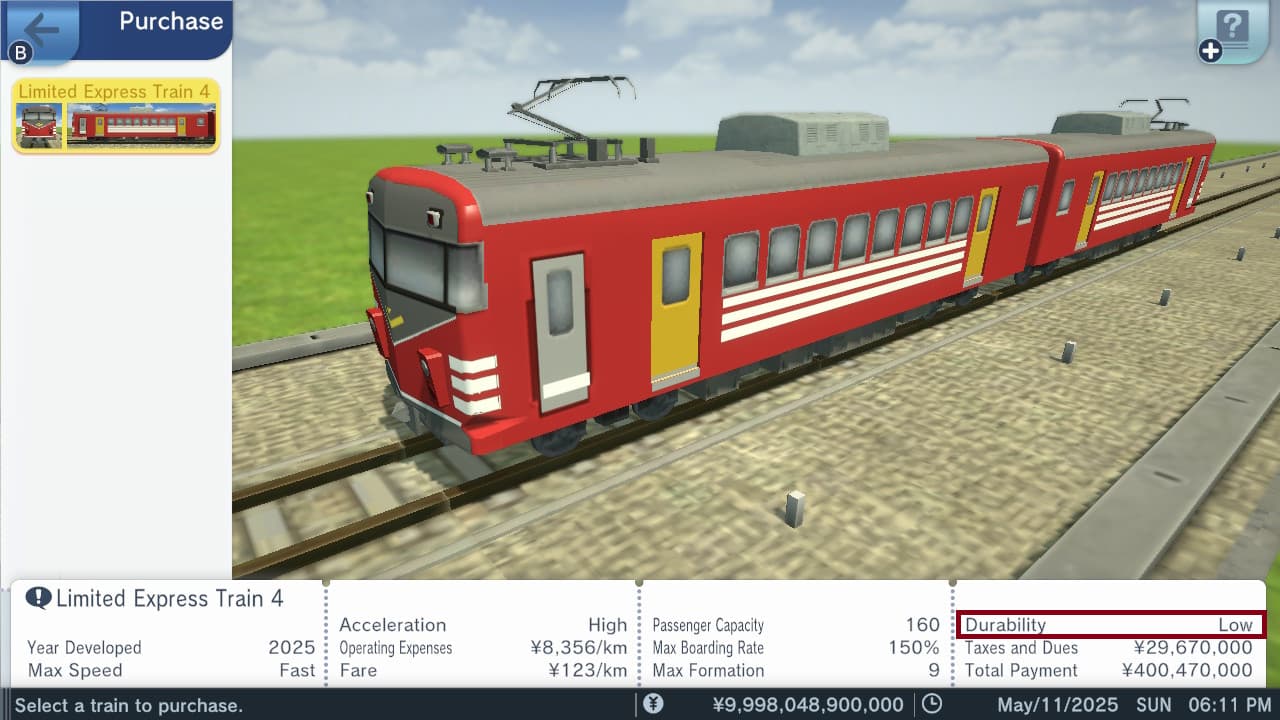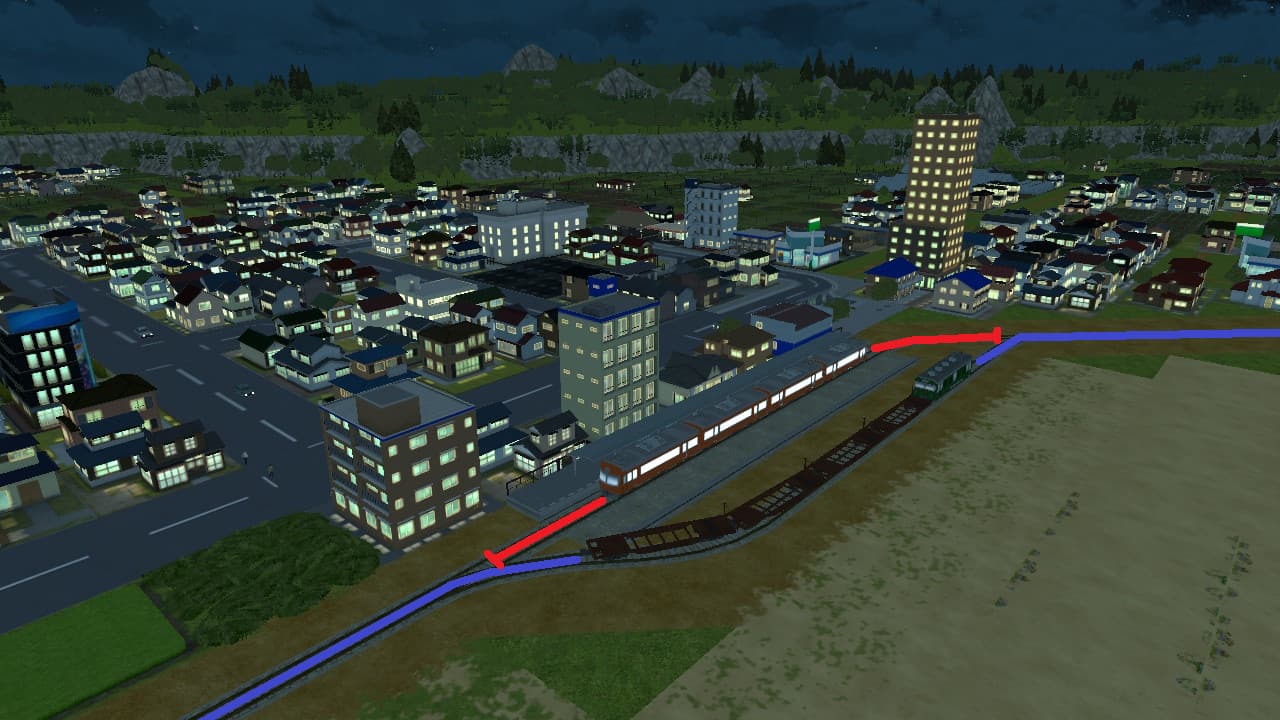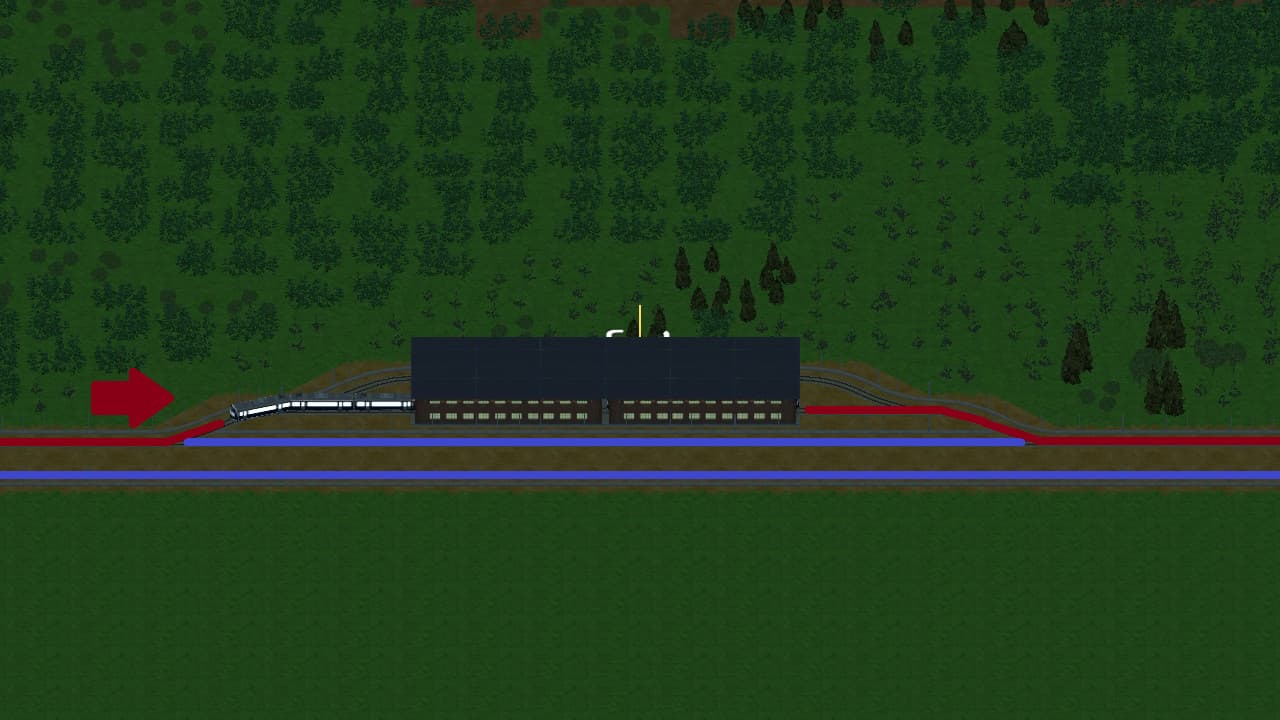Been experimenting with some of the more advanced railway operation concepts. Which in this example involves the use of depots and deadheading. Through the use of deadheading settings we can give vehicles a different route to take during assigned deadheading periods, which occur prior to and after their service (operational) hours. Hence, we are able to park our out-of-service trains off the mainline in a small depot area each night.
Depots essentially fulfill two important functions within A-Train 3D // A-Train PC Classic and A-Train: All Aboard! Tourism.
Firstly, depots play an important role in vehicle maintenance, as a vehicle parked at a depot will experience a slowed rate of deterioration across its operational lifespan. As vehicles deteriorate over time (typically years) they incur higher operating costs, which obviously eats into their profit margins. The baseline rate at which vehicles deteriorate is determined by the durability rating of the vehicle type.
Secondly, depots give you somewhere to park vehicles outside of their service (operational) hours. Unless warehoused off-map or within depots, out-of-service vehicles will occupy platform space at stations and stops. Freeing up this space can have a variety of benefits, depending on the situation, such as simplifying the challenge of routing overnight freight services.
Because, who needs space inefficient passing loops, which can be costly to construct in space-constrained or high land value areas, if you can just route the train through an empty station platform.
There are various designs we can use when creating our vehicle depots. Here are two common examples that you see employed for trains. The first (top) design acts similarly to parking our trains off-map in neighboring towns, our trains commence and conclude their journey at one end of the railway line. The second (bottom) design is more flexible operationally, when used in conjunction with a station, and thus can be constructed almost anywhere along a railway line.
One method of depot design I have been experimenting with involves the “roll-in, roll-out” (Ro-Ro) philosophy common to many OpenTTD station designs. Here trains arrive at and depart from the depot in one common direction. Thus, simplifying several of the potential headaches that can occur with depot designs that rely on complex time-sensitive routeing. A potential issue more common to the second depot design, that was pictured above, due to trains often crossing shared tracks to enter and exit the depot.
Hopefully, this has provided you with some insight into why depots can be a useful addition to our transportation networks and given you some inspiration for potential depot designs. Deadheading uses several of the same routeing and timetabling mechanics and strategies we have discussed previously. However, I can always dive into the nitty-gritty of utilising deadheading should anyone want some guidance.




